Overview of the basic information and our tips for CO2, VOC, humidity, temperature, liquid and gas flow sensors. If you are looking for a solution, Sensirion will not disappoint you.
Sensirion sensors measure reliably all the important environmental parameters such as relative humidity, temperature, the concentration of CO2, VOC and concentration of particulate matter. Sensirion also offers sensors for measuring liquid flow and the gas mass flow.
Environmental sensing
Relative Humidity and Temperature Sensors
Relative Humidity
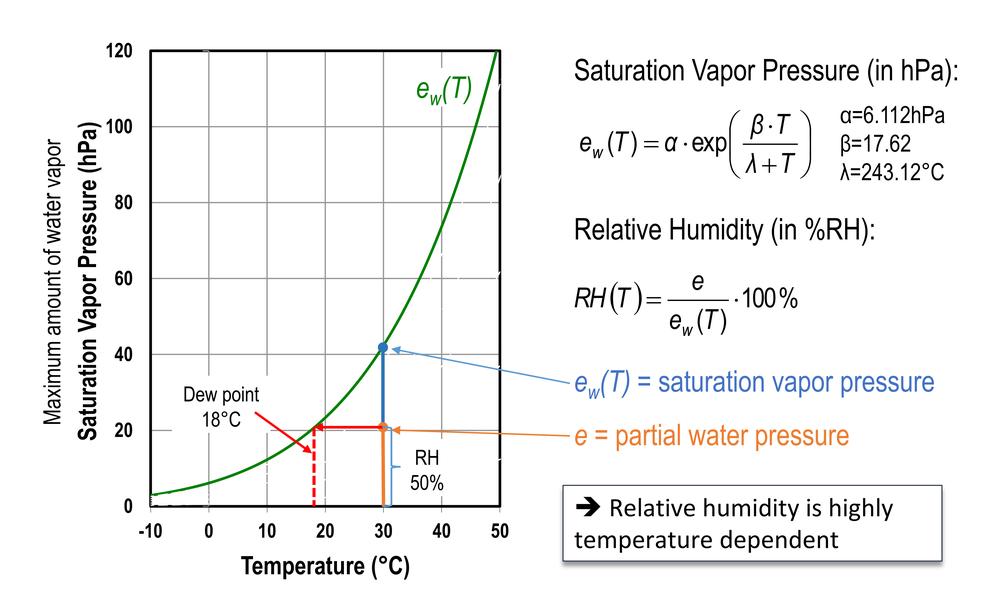
The Basics
Sensors are based on measuring the capacitance between electrodes placed in a porous polymer membrane. Water vapor penetrates into the membrane and changes the capacitance between electrodes.
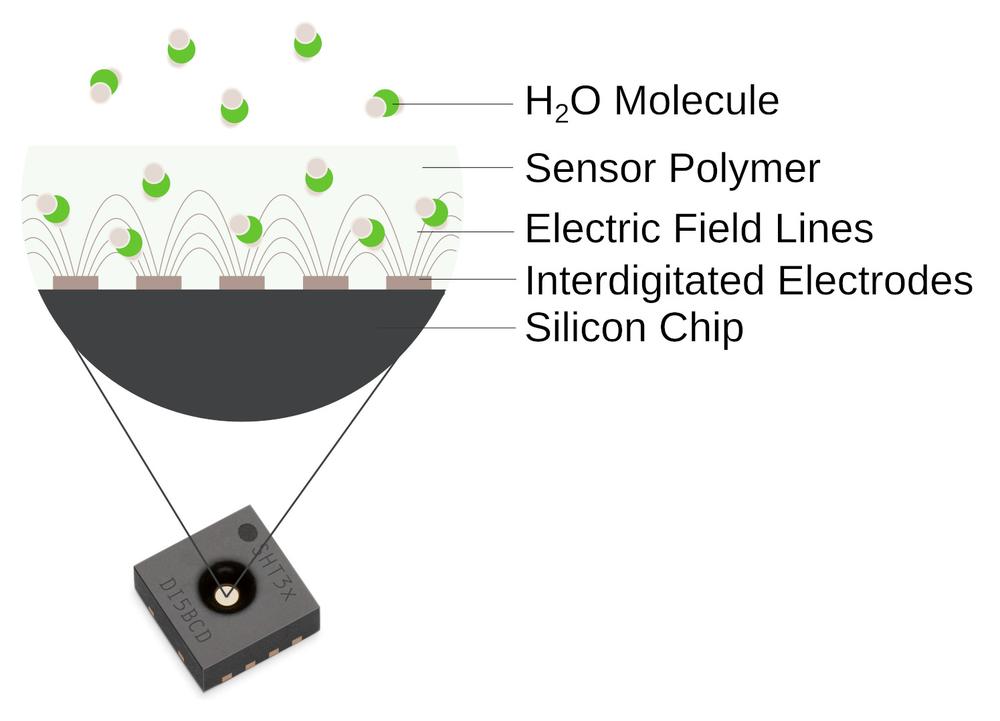
You can find the sensor comparison in the table below.
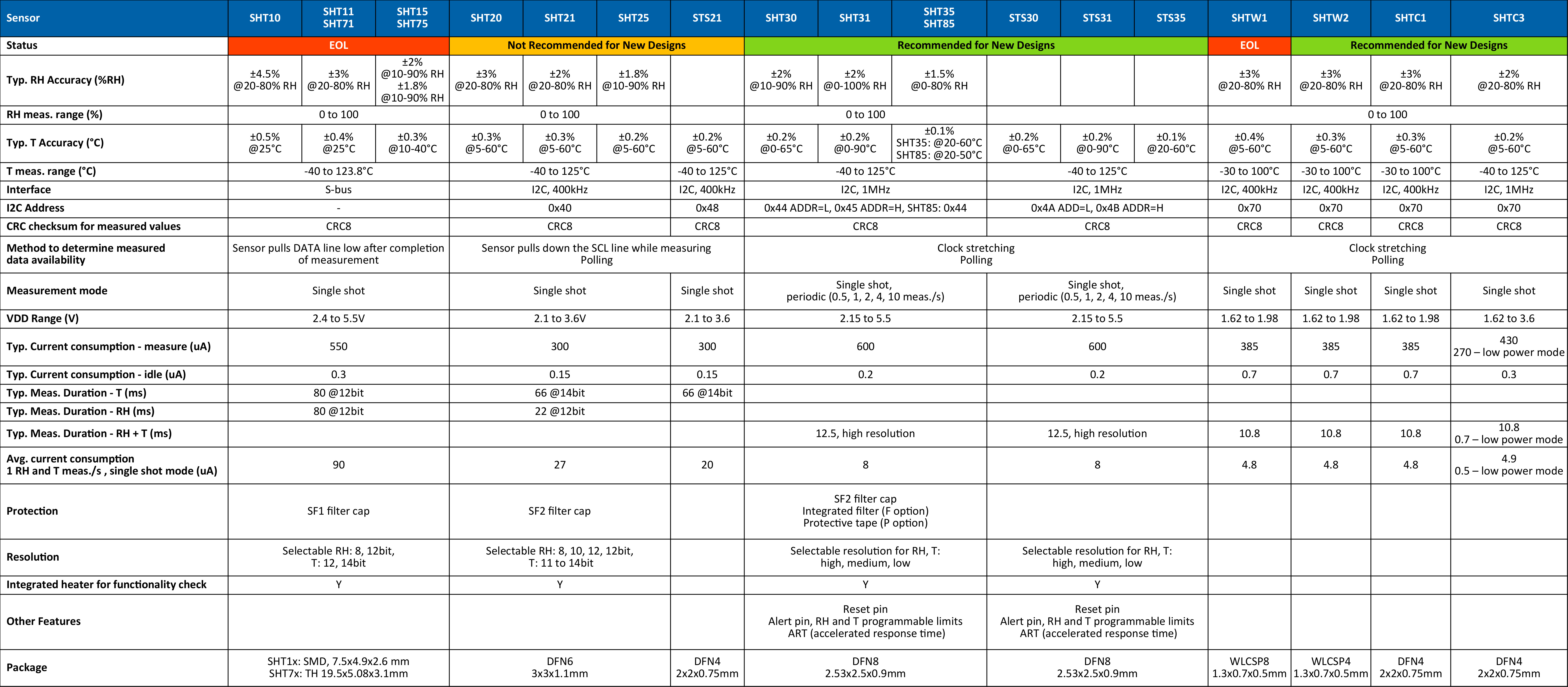
Worth to Mention
STSx Sensors
The STS21 temperature sensor has the same parameters as SHT21 except for lower average current consumption 20uA because of T_meas=66ms instead of T_meas+RH_meas=66ms+22ms for SHT21. The sts3x temperature has the same parameters as SHT3x but they measure only temperature.
Sensors Lifecycle
SHT1x sensors are not manufactured anymore. You can, therefore, use SHT3x sensors. Migration requires PCB redesign because of the different package and SW changes since SHT3x uses I2C interface instead of S-bus.
SHT7x sensors were also discontinued. Please, use SHT85 instead. Migration requires SW changes because SHT85 uses I2C interface.
SHT2x and SHTC1 are in mass production. Even though there isn’t a plan to stop the production, we recommend using the SHT3x and SHTC3 for the new projects.
SHTW1 sensor is not manufactured anymore, please use SHTW2 (different package, PCB redesign is necessary).
Battery operation
Lithium (Lithium-thionyl Chloride) battery has a nominal voltage 3V (3.6V). The battery is fully depleted when the voltage drops to 2V (cut-off voltage). All RH&T and T sensors have low current consumption and can work from a battery, but:
● SHT3X works in range 2.15 to 5.5V – can’t make use of full battery capacity
● SHTC1, SHTW2 works in range 1.62 to 1.98 – they need voltage regulator and I2C level shifter
● SHTC3 works in range 1.62 to 3.6V – covers full battery voltage range
Evaluation kits
Sensirion offers modular evaluation kits that consist of
SEK SensorBridge,
SEK-SHT31 (
SHT35,
SHTC3,
SHTW2)-Sensors, and freely downloadable software for visualization of measured data
ControlCenter.
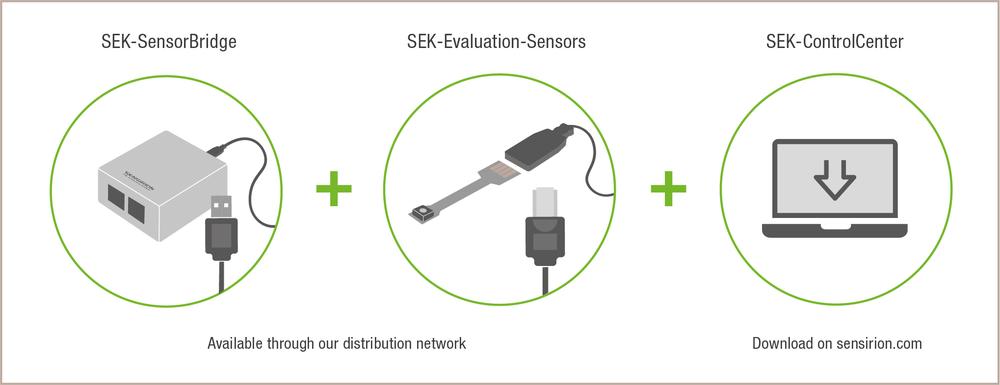
Metal Oxide Semiconductor CO2_eq and VOC Sensors
The Basics
The sensor contains a sensing element made of metal oxide (MOX), which is an n-type semiconductor, sensing electrodes and heater. The most used MOX nowadays is SnO2. Sensing element is heated to the optimal temperature for detection of a target gas. Typical temperature lies in range 200 to 400°C.
Oxygen from the atmosphere adsorbs at the sensing element, it binds its electrons and thus leads to the formation of a depletion layer. If molecules of oxidizing or reducing gases are also present in the surrounding atmosphere, they can react with the adsorbed oxygen ions, and the formerly bound electrons are available again as charge carriers in the sensing element. This leads to the decrease of energy barrier in the electronic band structure of the semiconductor which results in an increase in conductivity.
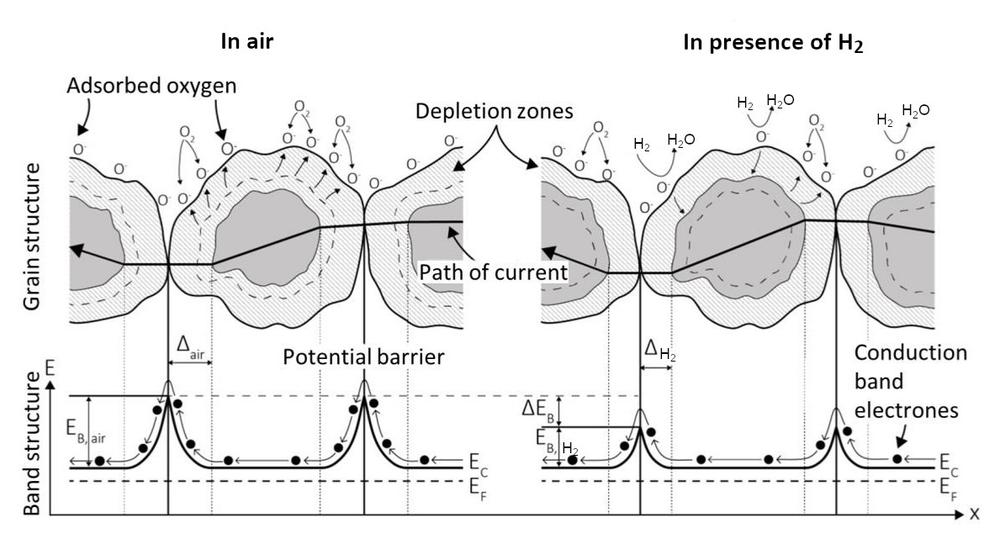
SGP30 and SGPC3
Sensirion takes a step further – they integrate multiple MOX sensing elements with electronics into the easy-to-use calibrated sensors for an indoor environment. SGP30 calculates CO2_eq from the measured concentration of H2 and measures the concentration of VOC. SGPC3 measures the concentration of VOC only. Both sensors provide measured values through the I2C interface.
The most important features are summarized in the table below.
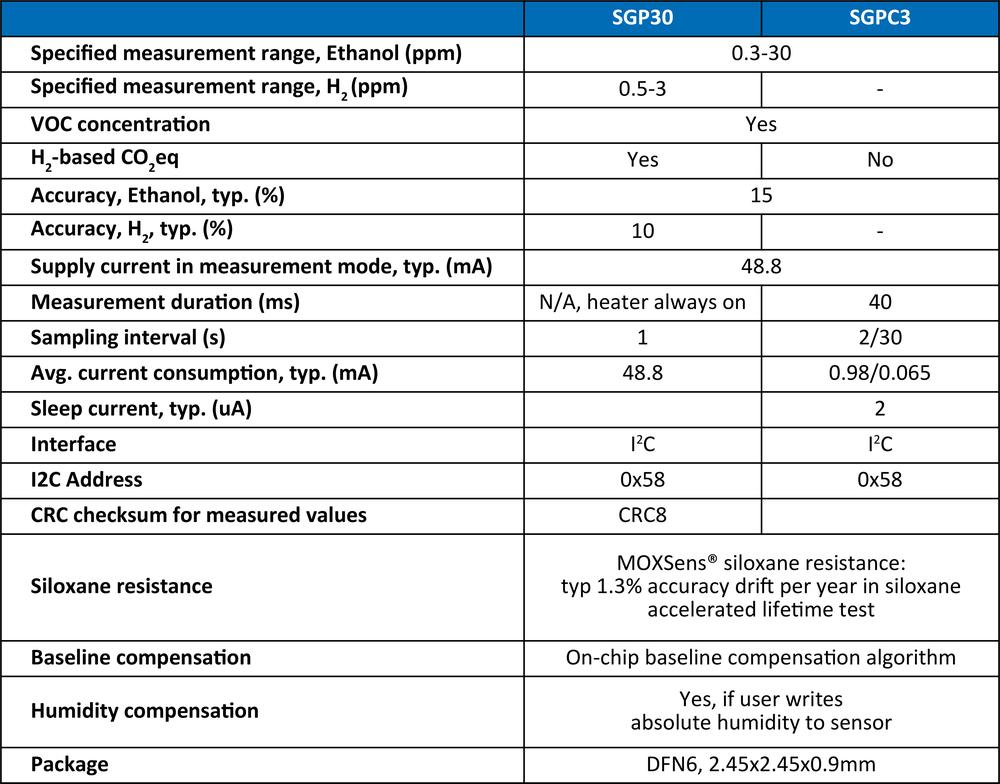
For more information about SGP30 and SGPC3, please read articles SGP 30 - The Game Changing Metal Oxide Semiconductor Sensor and VOC Sensor with 65uA Consumption Only
Evaluation kits
You will need SEK SensorBridge and SEK-SGP30 (SGPC3)-Sensors.
SCD30 CO2 Sensor
The Basics
NDIR (Non-Dispersive Infra-Red) sensor uses the fact that CO2 molecules absorb infrared radiation of certain wavelengths. The wavelength around 4.2μm has the maximum absorption for CO2 and minimal absorption for other gases in the air.

Worth to Mention
Reference channel-compensates the drifts when channels are affected the same way (e.g. light intensity). Dual-channel principle can’t guarantee the accuracy after assembly. Do the field-calibration after assembly to restore accuracy.
Evaluation kits
You will need SEK SensorBridge and SEK-SCD30-Sensor.
Particulate Matter – SPS30
The Basics
Sensors utilize the properties of light scattering to measure particle count, size, and concentration. The basic components are light source directed at the particles, detector to measure the light scattered by the particles and electronic circuits that process and analyze the detector output.
For more information, please read the article Technological Breakthrough in Optical PM Sensors.
Worth to Mention
SPS30 measures mass concentration for particulate matter PM1.0, PM2.5, PM4, and PM10 sizes. PM10 means all particles with a diameter less than 10um. SPS30 has detection limit 0,3um, thus it classifies PM10 as particles in range 0.3 to 10um. Similarly, PM4 particles are classified in range 0.3 to 4um, etc.
There are always smaller particles in the atmosphere. The graph below, taken from lab measurements with heavy aerosol, shows that the statistical occurrence of particles from 4 to 10um is about 300 times smaller than particles from 0.5 to 1 um, even for very heavy aerosols.
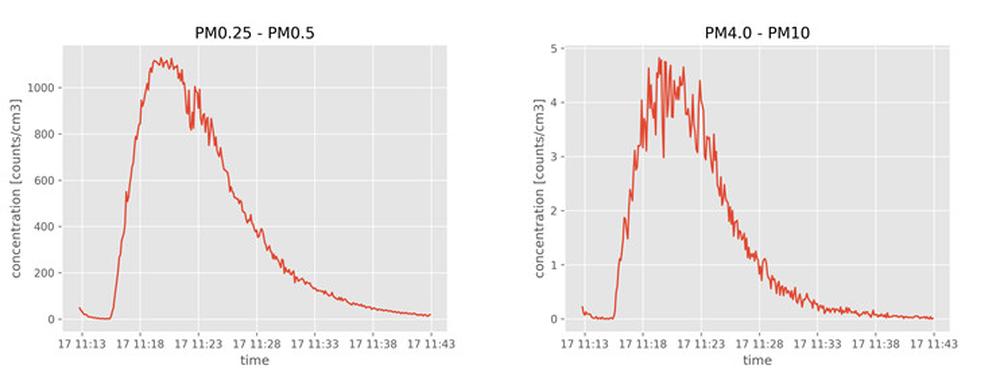
If you realize that the detection ranges overlap and statistical occurrence of PM1 can be 300 times higher than PM10, you will understand why SPS30 shows similar mass concentration for PM1.0, PM2.5, PM4, and PM10.
Differential Pressure Sensors
The Basics
Sensors use MEMS-based calorimetric microsensor. Sensing element is composed of two temperature sensors and a small heating element. The temperature difference measured by sensors correlates with the mass flow passing the chip.
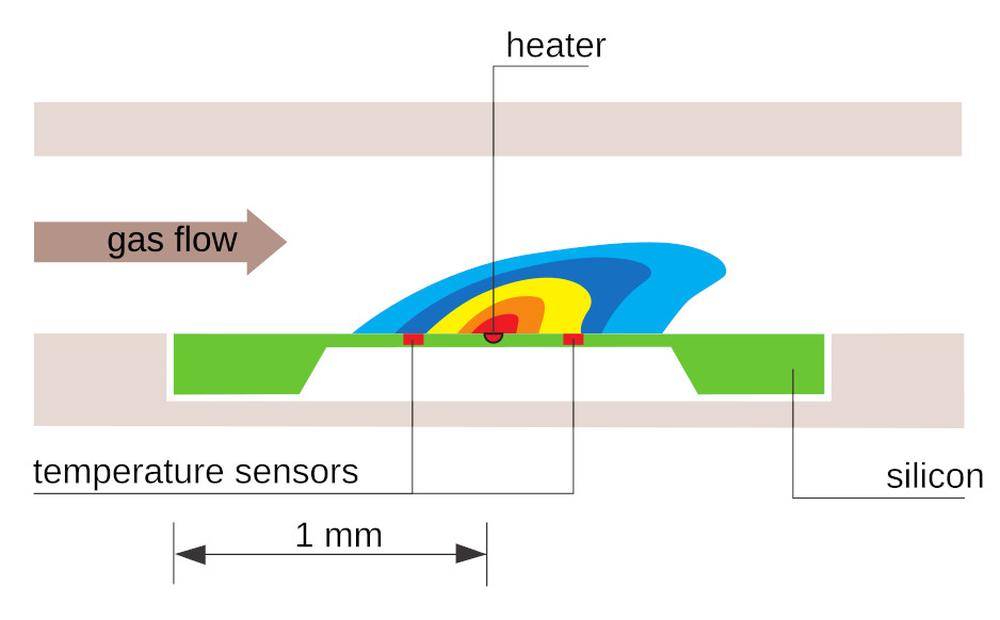
The output value is always differential pressure and sensors are temperature compensated for mass flow or differential pressure.
Please, read the application notes Selection Guide Differential Pressure Sensors and Whitepaper Differential Pressure Sensors Efficient Gas Flow Measurements in Bypass to better understand the basic principles of sensors.
You can find sensor comparison in the table below.
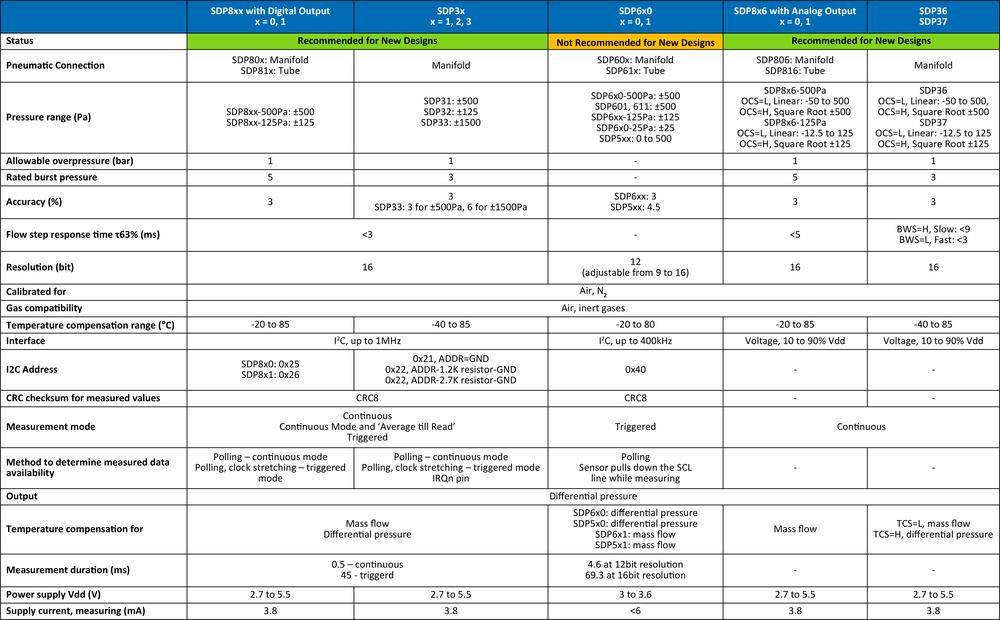
Worth to Mention
Benefits of the thermal operating principle
There are no moving parts – sensors are robust and reliable
● No drift
● No offset
● No position sensitivity
● No hysteresis
High sensitivity near zero
● Very large dynamic range
● Accuracy better than 0.04% FS near zero
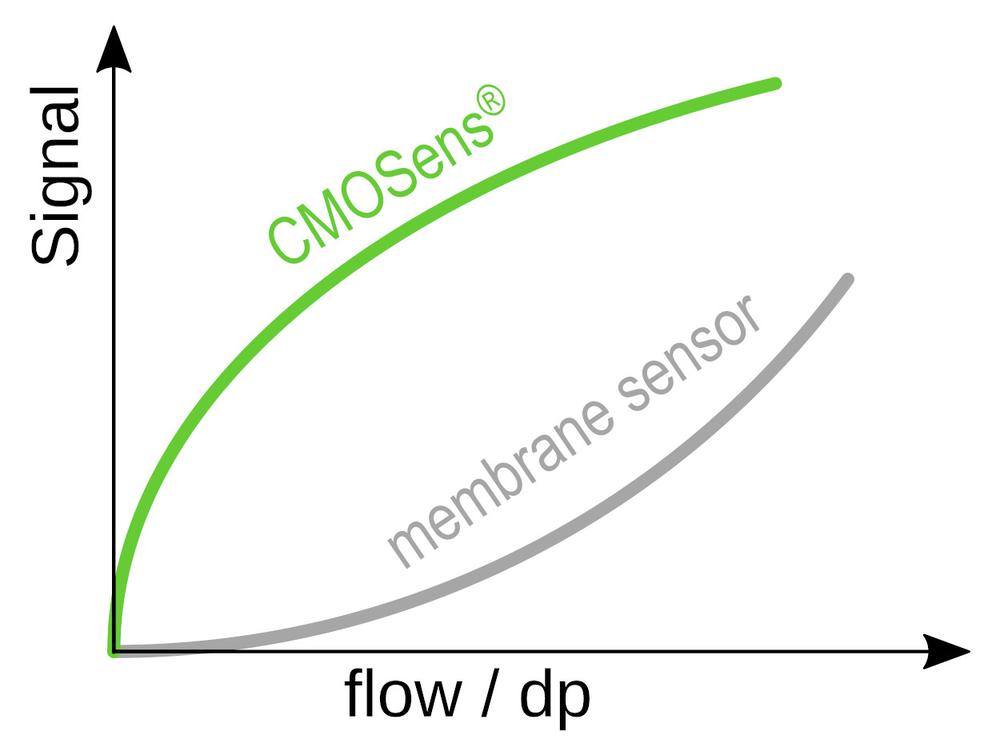
Gas Flow Measurements in Bypass
The best way to measure mass flow in a bypass configuration is to use a differential pressure sensor calibrated with temperature compensation for mass flow. Sensirion sensors have the highest sensitivity near zero, which allows using the flow restrictor that creates only a small pressure drop.
When we use electro-mechanical analogies:
● mass flow -> electrical current I
● flow restrictor slightly increases the resistance in the gas flow -> electrical resistance R
● thus I*R=V-> differential pressure
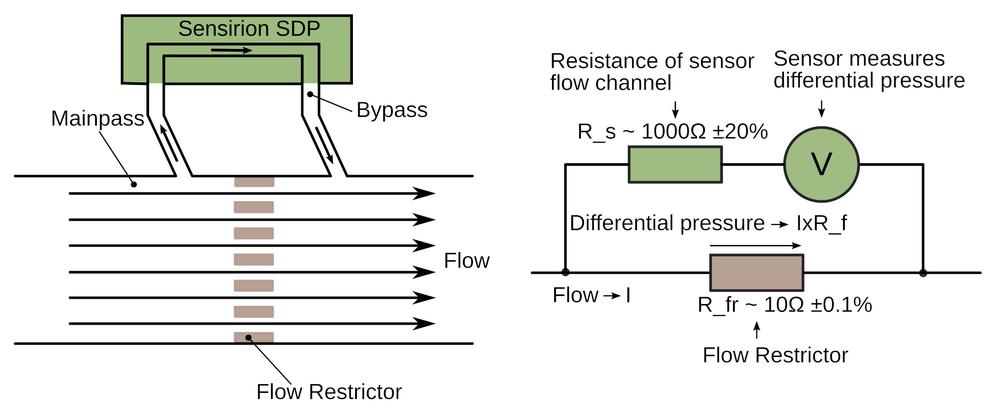
Flow channel inside the sensor is thin, thus it has high resistance. Due to manufacturing tolerances, the resistance has a high variation. Flow restrictor has small resistance and a very small variation of resistance because it can be manufactured very precisely. Since the sensor measures different pressure (voltage) and R_s >> R_fr, it is not necessary to recalibrate the system if the sensor is replaced.
Evaluation Kits
You will need EK-P4 for evaluation of the SDP31 sensor, EK-P5 for evaluation of the SDP810-500 Pa sensor and viewer software.
Liquid Flow Meters
The Basics
Sensors use MEMS-based calorimetric microsensor. Flow channel inside the sensor is covered by inert material, so the liquid doesn’t touch microsensor directly.
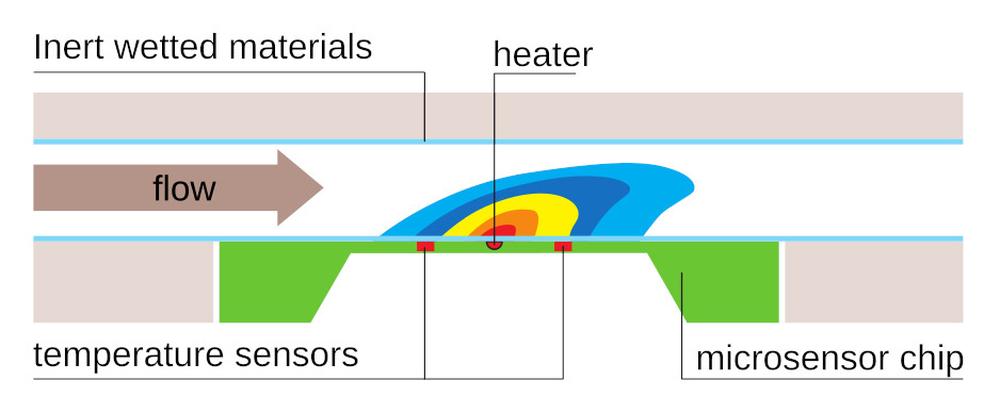
Sensors are designed to measure liquid flow in a range of ul/min to hundreds of ml/min.

● The SLx liquid flow meters with their robust housing are the first choice for demanding industrial environments and benchtop test set-ups or standalone applications. The liquid flow meters all provide the same electrical connector and have been designed for operation with the SCC1-USB, SCC1-RS485, and SCC1-Analog sensor cables.
● The Lx liquid flow meters are ideal for integration into an instrument, a device, or an OEM system, e.g. diagnostics or life sciences applications.
● The sensors of the LPG10 series are made of a miniature planar glass chip suitable for low flow rate and space limited applications. With their down-mount fluidic ports, they allow compact integration into microfluidic manifolds.
● The LD20 series has been designed as a single-use component for biomedical applications.
● The SLF3x has radically optimized mechanical design that provides the best price-performance ratio. The sensor maximizes safety, stability and long-term reliability for a vast range of applications, including the fields of diagnostics, analytical instruments, and life sciences.
Ability to measure small liquid flow precisely predestines these sensors for applications like
● Dispensing processes in the semiconductor industry
● Minimum Quantity Lubrication (MQL) machining
● Food processing
● Drug delivery and infusion
● Blood Analysis/ Sequencing
● Flow Cytometry
● DNA sequencing
You can find sensor comparison in the table below.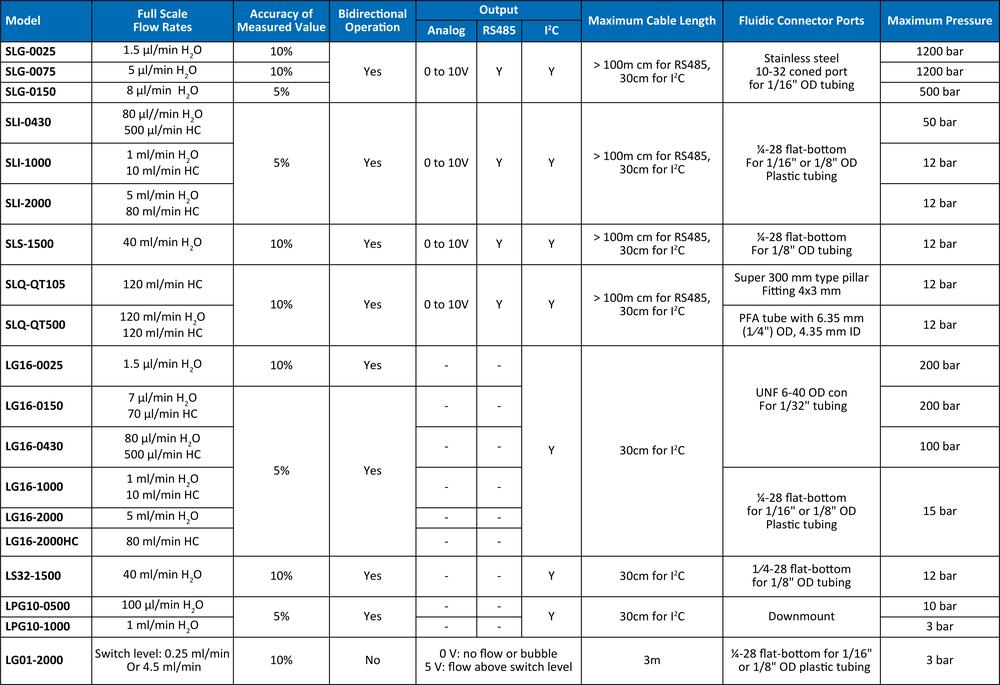
Evaluation Kits
SLI, SLS, SLG, or SLQ liquid flow meters can be ordered as a part of Liquid Flow Meter Kit. Apart from the liquid flow meter of your choice, the kit contains everything necessary to enable first measurements within 10 to 15 minutes.
For liquid flow sensors of the LPG10, the LD20, and the SLF3x series, we offer specific evaluation Kits which contain additional accessories for mounting support and connection to PC.
Mass Flow Meters for Gases
The Basics
Similar to other flow sensors, they also use MEMS-based calorimetric microsensor.
SFM3x series is designed to be used in medical ventilation machines. SFM4x series are general purpose mass flow meters.
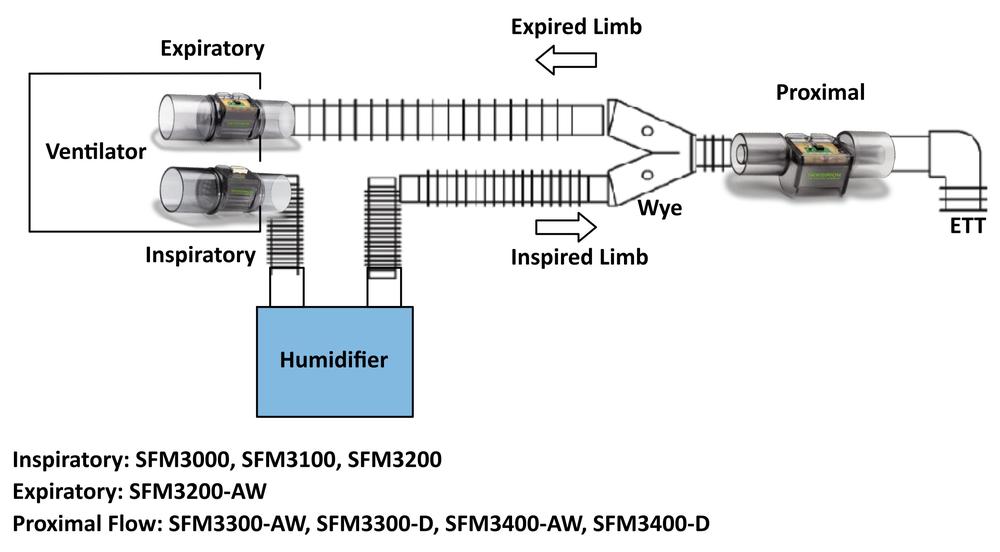
You can find sensor comparison in the table below.
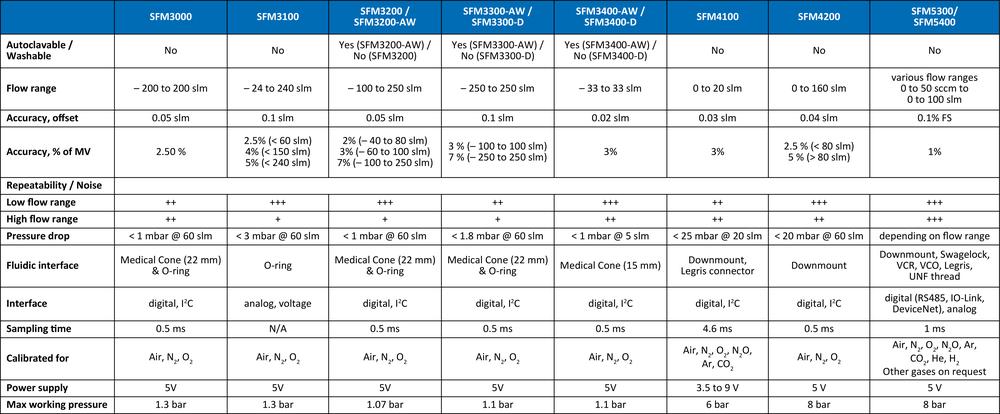
We can supply all of the above-mentioned sensors under favorable conditions either from our warehouse or directly from the supplier upon request.
For further information about Sensirion products, we are ready to help at sensirion@soselectronic.com.
Videos
Sensirion sensors measure reliably all the important environmental parameters such as relative humidity, temperature, the concentration of CO2, VOC and concentration of particulate matter. Sensirion also offers sensors for measuring liquid flow and the gas mass flow.
http://www.soselectronic.com/articles/sensirion/sensirion-the-sensor-company-2333